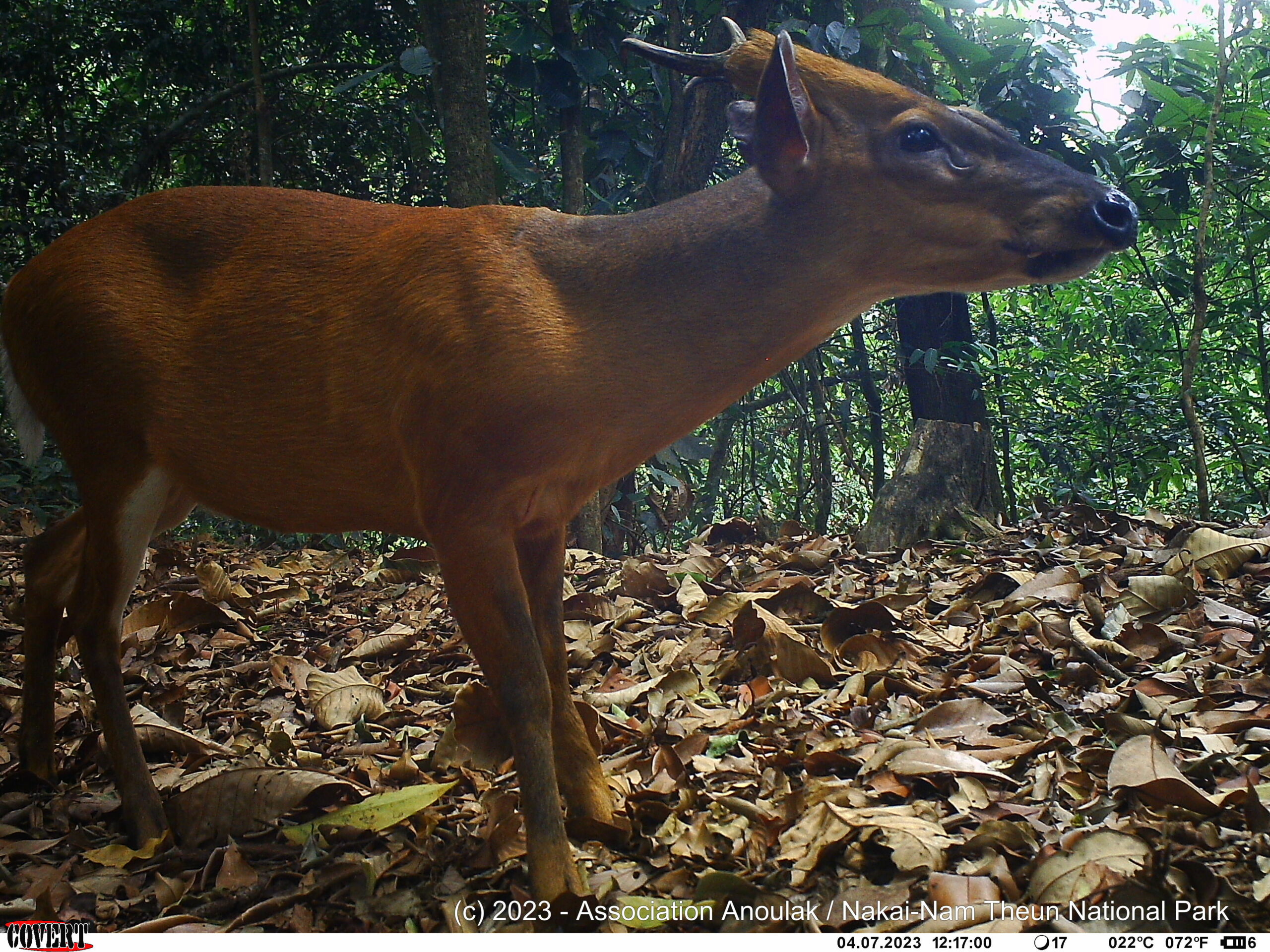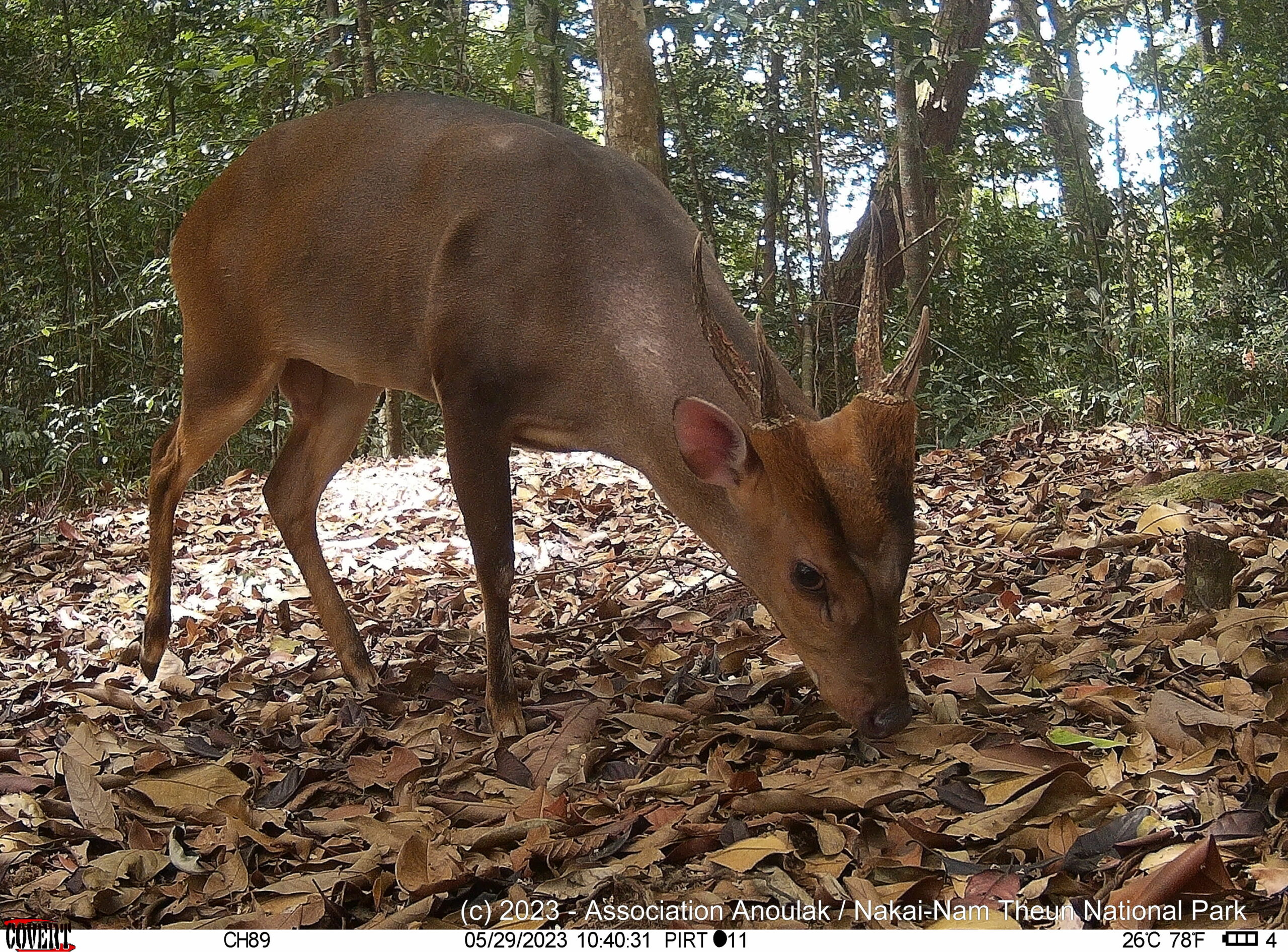
VIDEO OUT! Population survey of the Asian Elephant on the Nakai Plateau, Khammouan Province, Laos
November 3, 2023
The Power of Story: Attending a National Geographic workshop on storytelling!
November 27, 2023
This past year, Association Anoulak lead on the wildlife monitoring for Nakai-Nam Theun National Park with the main objective to estimate trends in animal populations (monitoring) over time and across landscapes as part of management plans. This survey is the third systematic camera-trap wildlife monitoring survey implemented (the base line survey was conducted in 2018-2019, replicated in 2020 and again this last survey in 2022-2023). This project was funded by Association Anoulak (through a grant received from Fondation Segré) and the Nakai – Nam Theun National Park Management Division (NNT NP).
 The Nakai – Nam Theun National Park is one of the most important sites for biodiversity conservation in the Annamite Mountains, yet is highly threatened from over-exploitation of wildlife. It is therefore imperative to adopt a conservation strategy for Nakai-Nam Theun National Park that includes sites prioritization where most of the resources for protection (e.g. anti-poaching patrol and law enforcement) are directed and where biodiversity is systematically monitored to assess the effectiveness of conservation interventions to protect biodiversity. The national park is divided into management zones including three Biodiversity Priority Zones (BPZs) (Figure 1) that were delineated based on their conservation importance at the national and/or global levels and past (and current) threat analysis (from past biological and threat records and from expert knowledge). To evaluate conservation interventions implemented by the national park management division, such as anti-poaching patrols, the monitoring and study of wildlife population trends is determinant. The survey design for the camera-trapping implemented in NNT NP follows the rationale and protocols developed by the Leibniz Institute for Zoo and Wildlife Research (IZW) (Abrams et al., 2018), with whom we collaborate for this project.
The Nakai – Nam Theun National Park is one of the most important sites for biodiversity conservation in the Annamite Mountains, yet is highly threatened from over-exploitation of wildlife. It is therefore imperative to adopt a conservation strategy for Nakai-Nam Theun National Park that includes sites prioritization where most of the resources for protection (e.g. anti-poaching patrol and law enforcement) are directed and where biodiversity is systematically monitored to assess the effectiveness of conservation interventions to protect biodiversity. The national park is divided into management zones including three Biodiversity Priority Zones (BPZs) (Figure 1) that were delineated based on their conservation importance at the national and/or global levels and past (and current) threat analysis (from past biological and threat records and from expert knowledge). To evaluate conservation interventions implemented by the national park management division, such as anti-poaching patrols, the monitoring and study of wildlife population trends is determinant. The survey design for the camera-trapping implemented in NNT NP follows the rationale and protocols developed by the Leibniz Institute for Zoo and Wildlife Research (IZW) (Abrams et al., 2018), with whom we collaborate for this project.

Northern Red Muntjac
This systematic camera-trap wildlife monitoring for ground-dwelling animals was conducted from December 2022 to November 2023, including and data processed, managed, analysed and reported. This is the third systematic camera-trap wildlife monitoring survey implemented in the three identified Biodiversity Priority Zones of the national park (the base line survey was conducted in 2018-2019, replicated in 2020 and again in 2022-2023, presented here).
The total survey effort was 22 645 active camera-trap nights with a total of 128 stations and 239 cameras in operation. A total of 36 taxa were identified at the species level. Of all taxa recorded, 17 are classified as Globally Threatened (i.e. Critically Endangered; Endangered; or Vulnerable), two as Globally Near Threatened and one as Globally Data Deficient by the IUCN Red List of Threatened Species (IUCN, 2023).
This study revealed several species of high conservation value and notably five endemic species to the Annamite Mountain range. Of particular importance in terms of their endemism to the Annamite Mountains and therefore requiring special conservation interventions across their range, are CR Large-antlered Muntjac, DD Roosevelts’-group Muntjac(s), EN Annamite Striped Rabbit, EN Owston’s Civet and CR Red-shanked Douc.

Owston’s Civet
In addition, other species of high conservation value recorded during this survey that have been particularly impacted by over-hunting across their range and particularly in mainland Southeast Asia are CR Pangolin(s), EN Asian Elephant, EN Hatinh Langur, EN Bengal Slow Loris, EN Pygmy Slow Loris, VU Greater Hog Badger, VU Binturong, VU Sun Bear, VU Sambar.
Our study highlights the importance of Nakai-Nam Theun National Park as a priority area for biodiversity conservation in the Annamites, and demonstrates the utility of using camera-trapping approach to establish a robust monitoring program of mammal communities in the National Park. This program should be maintained systematically in the long-term to provide information on population trends and species distributions across time and landscape.

Large-antlered Muntjac

Large-antlered Muntjac

Northern Pig-tailed Macaque

Stump-tailed Macaque

Assamese Macaque

Sunda Pangolin


Asian Elephant

Impressed Tortoise

Red Junglefowl

Wild Pig

Grey Peacock-pheasant
